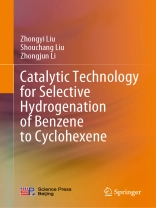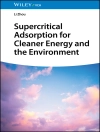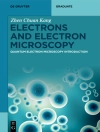This book provides a comprehensive description of the catalytic technologies for selective hydrogenation of benzene to cyclohexene. Focusing on selective hydrogenation of benzene to prepare cyclohexene and its downstream products, such as cyclohexanone, bulk chemicals and high-value fine chemicals, it also discusses the objective laws, reaction mechanisms and scientific significance based on experimental data, analysis and characterization results. Given its scope, the book will appeal to a broad readership, particularly professionals at universities and scientific research institutes, senior undergraduates, master’s and doctoral graduate students as well as practitioners in industry.
Table des matières
An overview of the catalytic selective hydrogenation technologies of benzene into cyclohexene.- Benzene selective hydrogenation thermodynamics, heterogeneous catalytic kinetics catalysis mechanism and scientific essence.- The first-generation catalyst for selective hydrogenation of benzene to cyclohexene-Ru-M- B/Zr O2(M=Fe, La) amorphous alloys.- The second-generation catalyst for selective hydrogenation of benzene to cyclohexene-Ru-Zn-Na2Si O3-PEG-10000.- Third-generation catalyst of benzene selective hydrogenation to cyclohexene—Ru-M (Zn, Mn, Fe, La, Ce) Nano-bimetallic system.- Fourth generation catalyst of benzene selective hydrogenation to cyclohexene—Ru-Zn@BZSS core-shell catalyst.- Modulation of activity and selectivity of the catalyst for benzene selective hydrogenation.- Catalyst deactivation and regeneration in benzene selective hydrogenation.- The catalytic technologies and key facilities for benzene selective hydrogenation.- Selective hydrogenation of benzene to cyclohexene and incorporate device of its downstream products.
A propos de l’auteur
Zhongyi Liu is a full Professor at Zhengzhou University’s College of Chemistry. He obtained his doctorate from Zhengzhou University at 2008. He mainly focuses on the precise regulation of the structure and properties of catalysts at the nanoscale and at the atomic-molecular level, and studies their catalytic hydrogenation and hydrogen production functions. The research focuses on catalytic hydrogenation, hydrogen energy and electrochemical energy storage related nano-catalyzed materials and in situ characterization of catalysis. He presided over the project of selective hydrogenation of benzene to cyclohexene, which broke the technical monopoly of Japan and promoted more than 10 sets in China, occupying 100% of the market. He has published more than 80 SCI papers as the first or corresponding authors. At present, in cooperation with enterprises, he has set up an industrial plant for catalytic hydrogenation of 50, 000 tons of phthalic plasticizer to produce cyclohexane-type plasticizer.
Shouchang Liu is a full Professor at Zhengzhou University’s Department of Chemistry and Molecular Engineering, and holds a doctorate from the Institute of Coal Chemistry, CAS. His research interests include the development and industrial application for the key technology of benzene selective hydrogenation to cyclohexene. He has published more than 100 papers in peer-reviewed journals, including Applied Catalysis and Chemical Engineering.
Zhongjun Li is a full Professor at Zhengzhou University’s Department of Chemistry and Molecular Engineering. He obtained his doctorate from Central South University in 1998. He has published more than 70 papers in peer-reviewed journals, including ACS Appl. Mater. Interfaces, Appl. Catal., Chem. Commun., and J. Power Sources. Among his current interests are the development and industrial application of the key technologies of selective benzene hydrogenation to cyclohexene.












